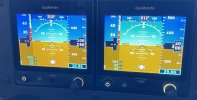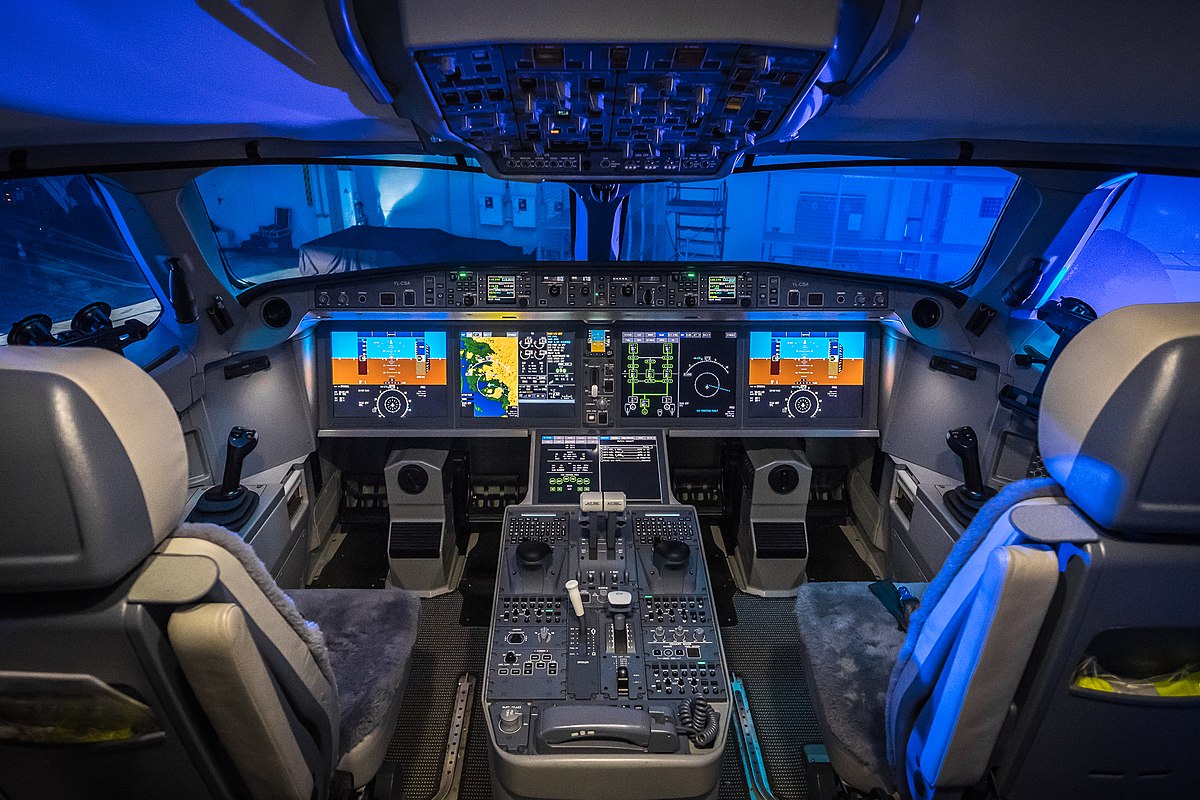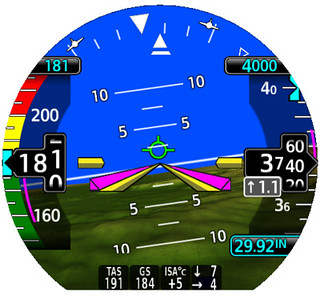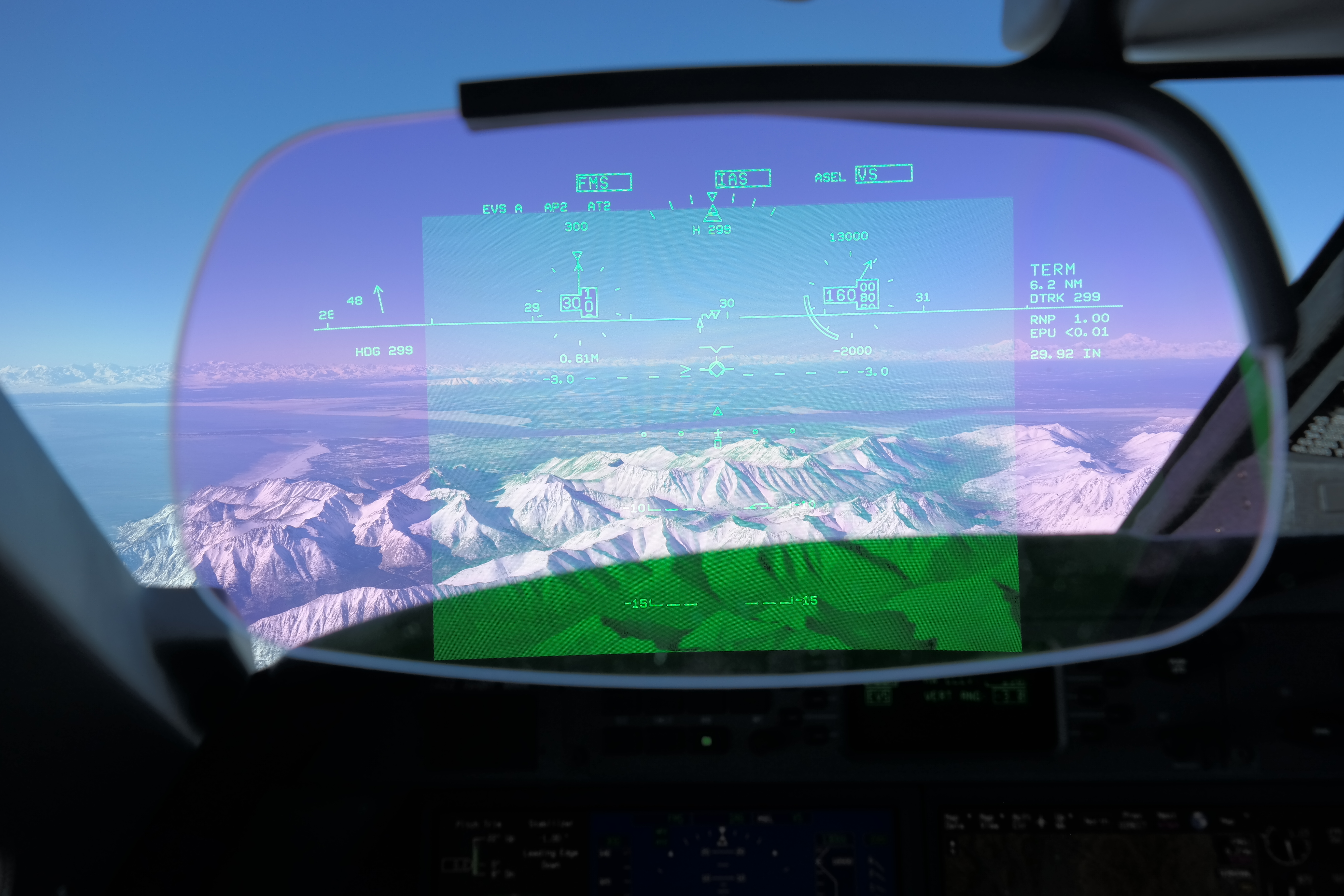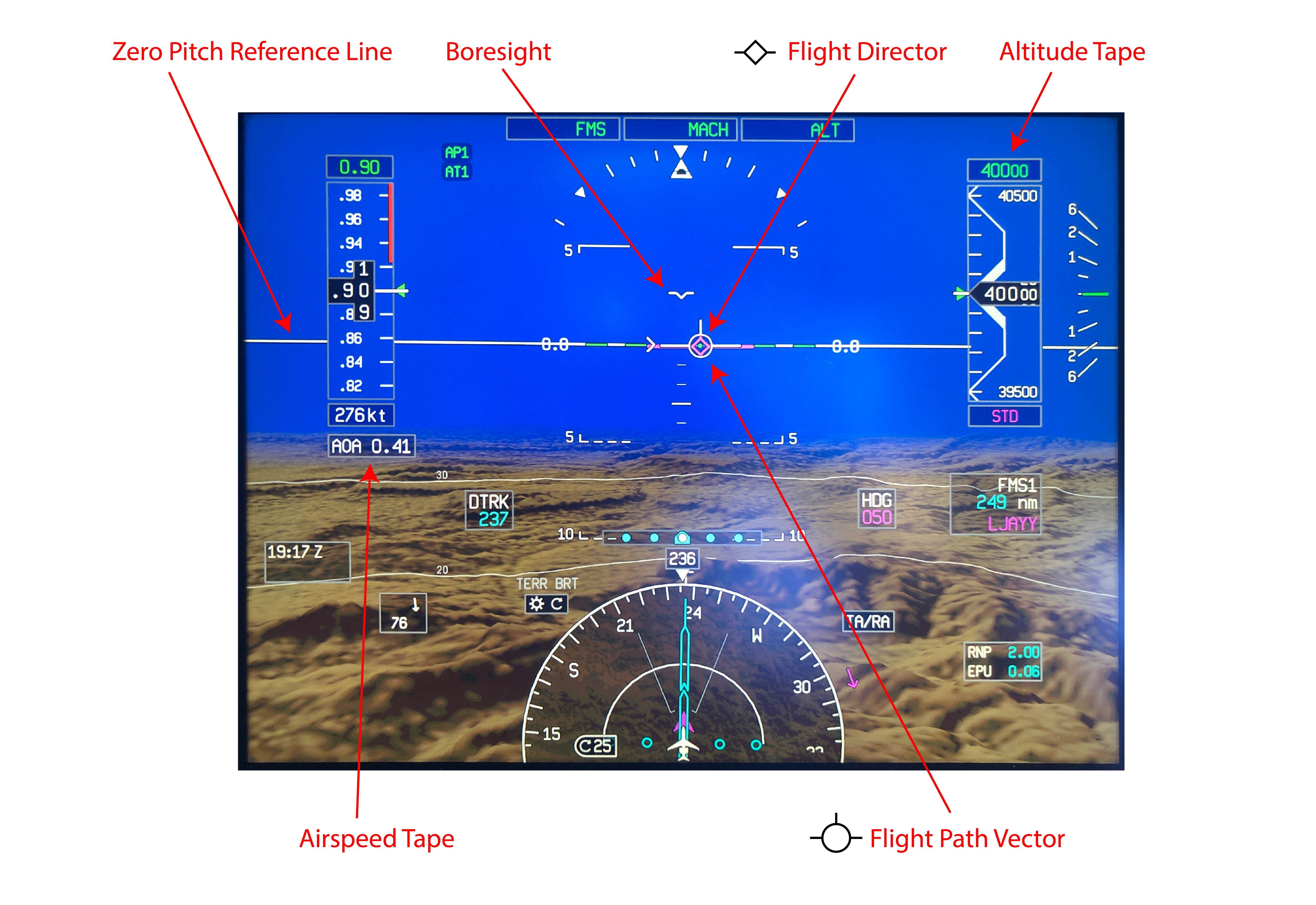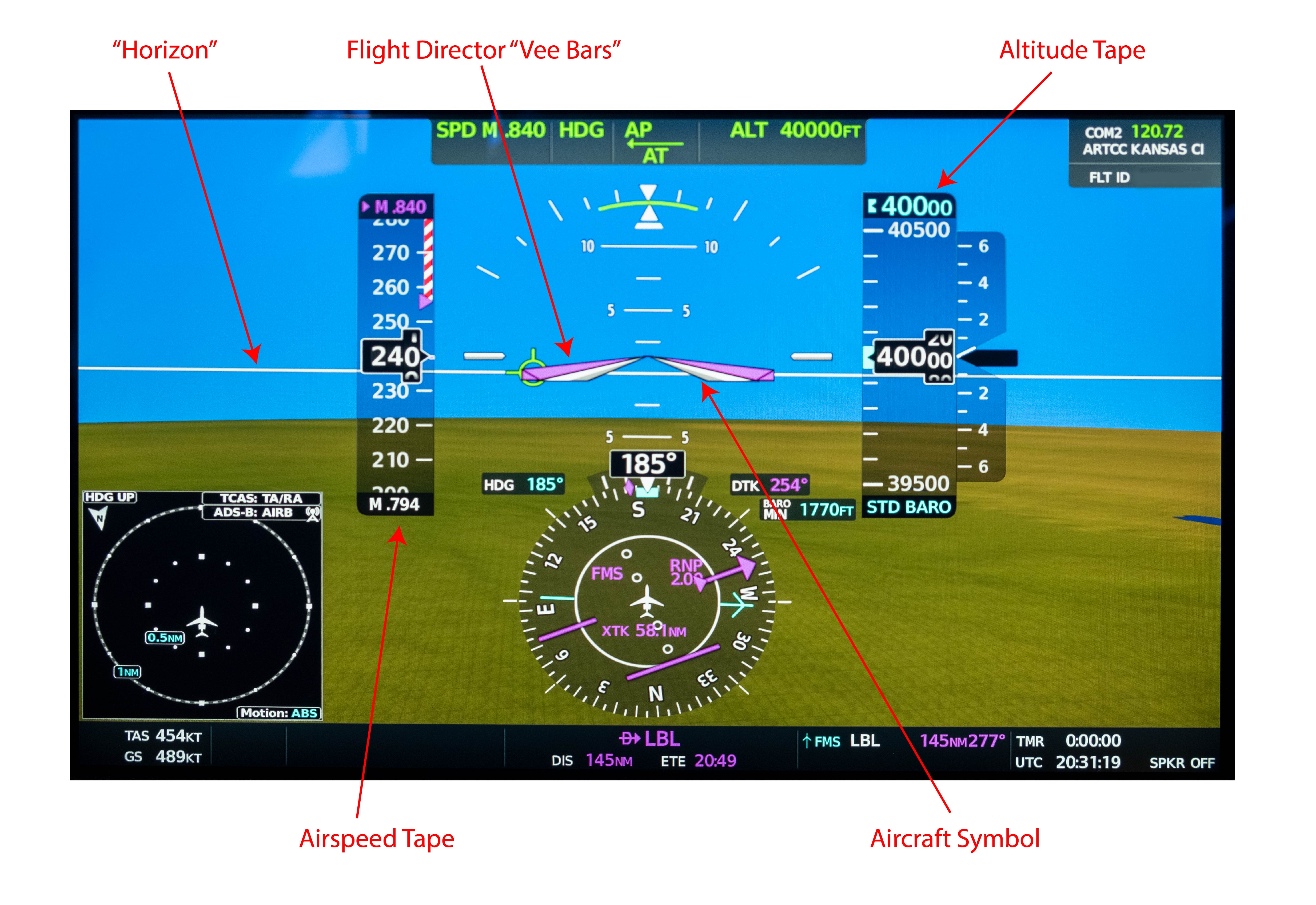I have nothing to add... thank you.
Ha ha yet you added.
What does Parallax have to do with anything? Lets use scientific method, repeatable experiments, observation, data and mathematics (with a closed form solution)
Parallax is not present in the display of "glass" which are CRT (yes CRT) to LCD. True. There could be off angle clarity issues but not parallax.
What others have said
(and what I think you are implying) is that the G5 being 3 degrees nose up is OK, get use to it, somehow related to "parallax"? Wrong.
Fact "Six-Pax" pitot/static, electric, vacuum instruments are different than "glass".True. Specifically analog AI's on GA planes had an adjustment for the airplane reference. You imply for Parallax? Not 3 degrees worth. It was just preference. Parallax is small. Lets use SCIENCE!
Experiment: Sit in a GA plane with Vac/Electric analog AI with it erected. Assume pilots from 65 to 74" tall. Now simulate a seated position for both short and tall pilots. Set the airplane to preference. (NOTE 99% of the pilots would set the airplane reference to be split by horizon line or close to it.)
Observation: Now move seat and NOTE the difference moving seated position made. You can use different pilots or simulate it with one person.
DATA: Measure angles and distance of eye to instrument, and noted change in AI pitch reference.
Math: Trigonometry of parallax. Take the approx distance of the airplane (fixed) reference to face of moving gyro AI horizon and distance of eye to AI. Do the MATH... You will see parallax is small. AT NO TIME IN PAST OR REPRESENT OR EVER WAS PARALLAX 3 DEGREES... So stop saying Parallax. My G5 was not set up properly. The adjustment of pitch Ref was there and still there for pilot preferences. Regulations IMHO took this ability away needlessly for GA, which they copied from the Regs for transport category and military which had Glass well before GA.
Three points: I had with a badly adjusted G5, period, end of story. Parallax with analog gauges is irrelevant
1) Parallax with analog Vac/Elec AI's is small and irrelevant to my original question. Analog AI's have adjustable plane Ref, for preference. Most pilots will set it to indicate approx. level in level flight. I am sure there are exceptions. This is my OBSERVATION from flying as a CFI with 100's of pilots over the decades. This is fact.
2) "Glass" PDF (Primary Flight Display) for EAB (expeerimental amature built) planes do not have to follow the Reg for certified planes. Therefore Garmin G5's for this market had pilot adjustable pitch (in flight from thee menu).
3) Why do PFD's (primary flight display) or electronic AI's have this limit pilots can not easily adjust pitch Ref in certified GA planes? REEGULATIONS... That is it. Who are regulators? FAA, bureaucrats and lawyers. They are people who are smarter, better than we are and never make a mistakes. I am kidding. We are all human. Personally Regs are made to be interpreted and to be changed. Will they change it? Likely not, but then again there is NO NEED. After my research (not a waste of time) and this thread which is a waste of time, there is NOTHING keeping you from adjusting the PDF/AI to your preference if the installation per general AML-STC allows it. In the case of a generic non specific AML-STC to install a Garmin G5, you can adjust to "compensate for aerodynamics of aircraft".
NOTE: A point no one argued, is it is important to set pitch Ref and LEAVE it alone, so follow pilots who memorized pitch + power settings have that benchmark to hang their hat on. Yes and No. Our club is small and everyone knows. One Owner/Pilot plane flown by one pilot no issue. However what about renting a plane with analog "steam" gauges that you others can adjust pitch Ref seated in plane any time? (Don't say parallax) You start engine and adjust it to what you want (preference) on the ground, making small adjustments in flight if/as needed. In the case of a C152 it SITS at a nose up attitude on the ramp with strut inflated properly, which is CLOSE to AOA for being level in flight. When maintenance installs a G5 in absolute level to ground attitude that would be nose down in flight. That is why you have to fly around 3 degrees nose up in flight for level. Why set pitch Ref to read level for a fairly sporty descent?
Glass that is CERTIFIED for a specific Air Transport Category has very specific calibration and adjustments that shall not be deviated from. There are manuals that are specific. The G5 is not super specific and further the experimental market version has pilot adjustable pitch reference ability. For the certified market, Garmin, made a software change, removed pitch adjustment from the menu pilots can access with unit booted up. You have to pwr down the G5 and re-boot it in program mode to make the pitch Ref change. It is not hard. It is THE SAME INSTRUMENT. When GLASS came to GA certified planes FAA copied Air Transport Regs. To comply with the Reg they did this small change. However for experimental non STC version they give PILOTS WHAT THEY WANTED, easily adjustable pitch Ref in flight. These are all facts.
In my RV7 or GRT Horizon Glass Cockpit I can do as I like (as long as it is safe, legal, reasonable). EAB (experimeental amature built) aircraft have more leeway in many areas.
However in the case of this club plane and trainer, which was my original question, out of respect and caution for legality, maintenance and good communications, I got all on board. I could have adjusted it myself, but I am a stickler for regulations, safety and good communications. It is not my plane. I pointed out what Garmin said (I talked to them) and what the manual says, as well as my justification for adjusting it. Done. The Club principles and maintenance were reasonable and not intransigent after we discussed it, unlike some people arguing get use to it ad nauseum. THE PILOT is the end user, If THE PILOT wants the attitude to be near level in level flight and instrument approach descents, it is safe, legal, than do it. Parallax? No. Get use to it? No.
Fancy Glass, HUD, FLIR, 2-Axis autopilot, irrelevant to training pilots to hand fly by sole reference to instruments. GA pilots (and a few air airline pilots) who fly around all day with autopilot in CMD from 400 ft after takeoff to 400 ft before landing, all the time, likely develop poor instrument flying skills. THIS is where I teach good scan, cross check, interpet, control, not relying on autopilots, glass and GPS alone. YES I teach LOC, VOR, DME and NDB. The latter two if only academically for the most part.
Before the peanut galley chimes in, it is required knowledge per INST ACS. DME is gone? Nope required at FL240 and above. NDB's are gone. Not in Canada, Arctic and sparsely populated lands abroad. NDB has long range (but affected by weather). You can tune in a high powered AM Radio (BCB) signal at night from 500 to 1000's of miles away. For all practical purposes NDB, VOR are going, at least to a minimum level Military uses DME or TACAN
tactical air navigation system. You can fly in the USA IFR system with only a WASS GPS with RNP alone, nothing else. However GPS can go away for many reasons. Large jets have IRS systems and can fly autonomously without ground or GNSS navigation aids. This is why on Low Alt Enroute Charts airports have
MON designation.
Do you know what that means? Ans below: PS I get $60/hr dual given or work for food or tasty drinks.
VOR Minimum Operational Network. Again I get $60/hr in unmarked bills for giving dual instruction.